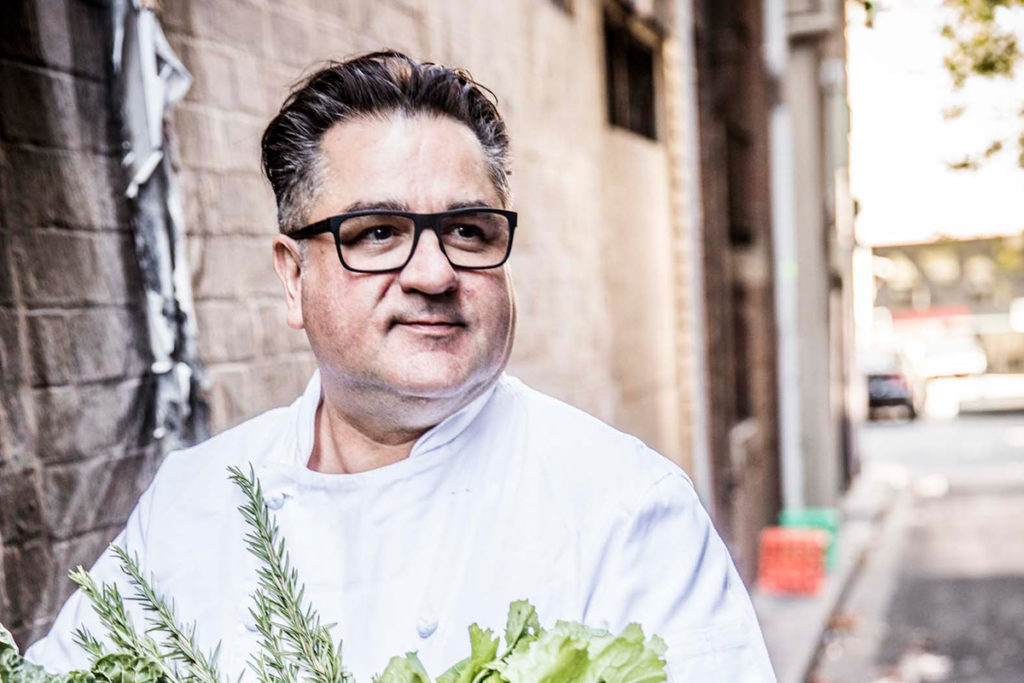Australia’s godfather of Italian cuisine, Guy Grossi, speaks to BeanScene about Melbourne’s early coffee culture, family traditions, and why reinventing the wheel is the key to longevity in the hospitality industry.
In the 1950s, Lygon Street, or “Little Italy” as it’s known in Melbourne, was a bustling street of Italian migrants hanging outside coffee bars, reading the newspaper, and smoking cigars. On a Sunday, Guy Grossi’s father, Pietro Grossi, a Milanese migrant, would take his son to Lygon’s Caffe Sports bar and converse with everyone he passed.
“Dad knew everyone on the strip. He’d chat and talk to the boys and we’d always get a cappuccino. It was always a delicious experience, and probably my first taste of coffee as we know it today,” Guy recalls.
“Coffee back then in Melbourne was more simple. Coffee was coffee. It was an important part of Melbourne’s culture – and breakfast and morning activities – but it wasn’t given any consideration of how good it could be. Generally it was Italian branded. There wasn’t the myriad of roasters we see today.”
Back at the family home, coffee was made with a Bialetti device. At nighttime or in the afternoons there would always be a pot of coffee on the stovetop. The next morning, the leftover coffee would be put in a pot with some milk and a couple of spoonfuls of sugar, warmed up, and given to the kids to drink for breakfast. Guy says it was best soaked up with a leftover piece of cake or bread.

“Interestingly, if we look at what’s happening in the coffee scene now, we’ve got a lot of people embracing old traditions. You can’t beat the Bialetti,” Guy says. “Filter was something people used to frown upon because it was always so terrible. Straight away, they’d get this image of American diners with coffee pots sitting on the counter, trying to keep warm for hours – of course something like that can’t taste good. But now, we’re discovering that filter coffee is one of the best ways to really taste the nuances of a coffee.”
In today’s sophisticated coffee market, Guy says consumers emphasise the importance of quality and won’t accept mediocrity.
“An espresso needs to be decent with a good crema and great flavour, not just a bitter hit,” he says. “With milk, the coffee has to be creamy and rich with a lovely caramel flavour and nuttiness to it, so that when your teaspoon shakes around in the cup you can hear that thumping hollow sound of the milk that’s emulsified with the coffee that’s in there.”
Guy enjoys an espresso in the morning and another in the afternoon. While he says there’s certainly a scientific and technical side to making a good coffee, the rest comes down to having a good product, preparation, and execution.
“You wouldn’t buy dodgy meat and expect to have a good dish in the end. If you want great beef you buy great beef, and it’s the same with coffee,” Guy says.
He has enjoyed memorable coffee experiences in New York, San Francisco, and London, largely thanks to the rise of Aussie expats taking their love of coffee to developing coffee cities. However, he says there’s no place like home when it comes to our coffee standards, with Melbourne and Sydney’s esteemed reputations thanks to the cities’ melting point of cultures that have been embraced by the population and their overall fascination with great coffee.
“When you’re in other parts of the world they make jokes saying ‘OK, you’re from Melbourne, better make sure the coffee is good’,” Guy says.
“In Australia, people have always asked themselves how we can we get the coffee better. Now, they don’t accept coffee that was roasted months ago. They’re demanding something fresher and more information on where their beans come from.”

As such, Guy says consumers have embraced locally roasted coffee, and knowledge that their coffee is not bought below the cost of production.
“We’re inquisitive. Let’s know we are actually supporting farmers that grow a really decent product by giving them a little more for it and encouraging them to work harder to produce a better quality by processing in a more clean, stable, sustainable environment. I think people have really embraced that philosophy over the years, and that’s pushed the quality up,” Guy says. “Like anything else, once your game goes up, it’s hard to look back.”
The same rule applies for the coffee served at Grossi Florentino in Melbourne. Guy works with Chris and Peter Nikolakopoulos at Kaffeina Coffee to develop a six-bean blend for maximum intensity and complexity in the cup with the right balance of flavour for his Melbourne customers.
“I wasn’t sure at first why we need so many different beans but they convinced me. They use beans from different provenances around the world and the end result is something we think is pretty special,” Guy says.
“In a restaurant, the coffee is the last thing people have and if you don’t do it well, it can spoil a great experience. Some people make an emotional investment to come for a three-to-four-hour dining experience, and others will just spend 10 minutes and walk in off the street for a coffee. If you can’t impress them with a coffee, then you’re in trouble. Is there enough competition around? Of course. Once upon a time you might have got away with average coffee, but not any more.”
Guy knows all too well the challenges and competitive nature of Melbourne’s hospitality scene. His father started Café Grossi around 1989 and it has taken the city of Melbourne on an incredible culinary journey over the past 20 years.
“There was a lot at stake but we’ve been very lucky,” Guy says, sharing a picture of himself and his sister Liz Rodriguez with their dad outside the café. “It’s a oldie but a goodie.”
This article appears in FULL in the October 2019 edition of BeanScene. Subscribe HERE.




